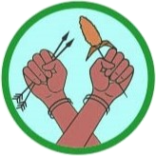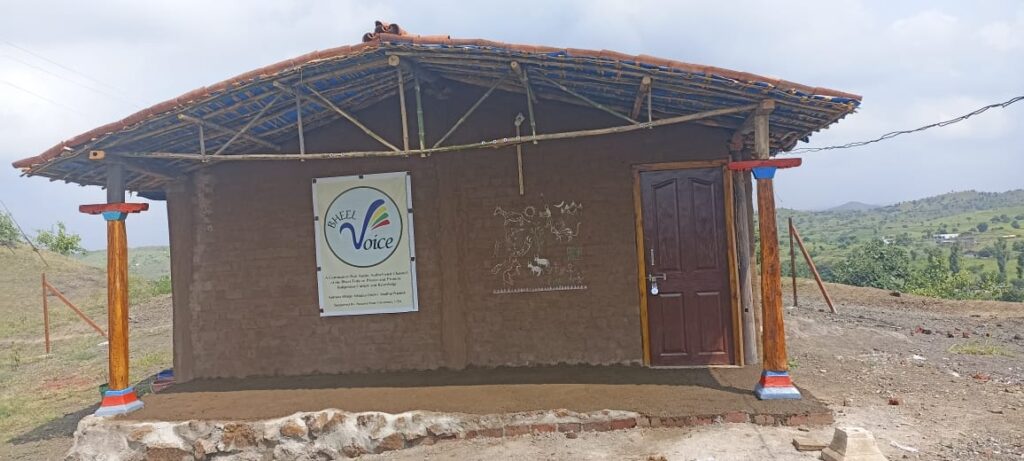
Khedut Mazdoor Chetna Sangath (KMCS), the Bheel Adivasi mass organisation of Alirajpur district, with which MAJLIS is associated as a partner, has been active for four decades in rejuvenating the traditional richness of the culture of the Bheels and has launched an internet radio and video channel called Bheel Voice in association with the Arizona State University of the United States of America.
Development of a community is not possible without their being able to articulate their problems. This is where the vast majority of Bheels have been hamstrung by the lack of a literate language and a codified culture. Even though this has had its advantages in terms of keeping the Adivasis free from various social problems, given today’s complex systems of commerce, industry and governance this has meant that the Bheels’ aspirations have been consistently marginalised for the fulfilment of the desires of the more articulate sections of society.
Presently the debate surrounding the idea of development and its implementation is taking place in languages that are alien to the Bheels and so they are not contributing to it. Indeed, the Bheeli dialects do not have the wherewithal to address these ideas at all. The KMCS has tried to correct this lacuna and literally give the Bheels a say in the affairs of the region and the nation by facilitating the creation of a rich new written language and literature and promoting its traditional music and dance.
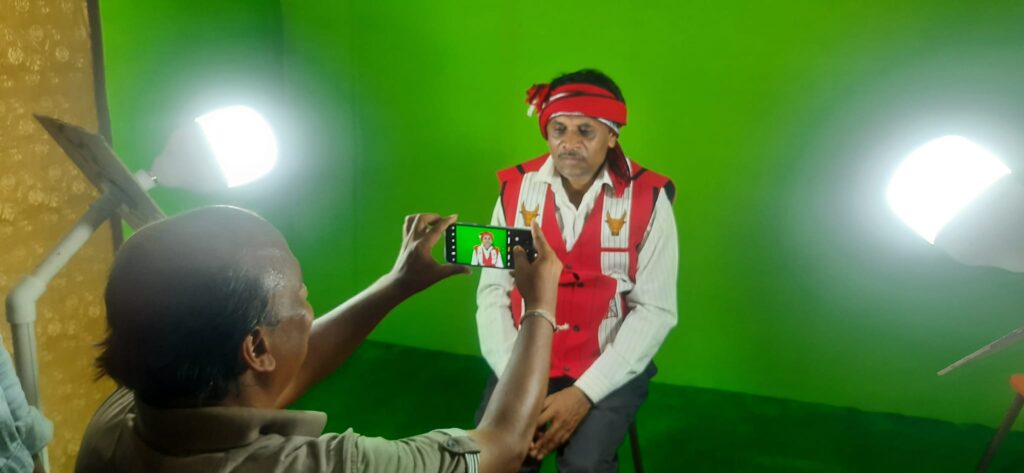
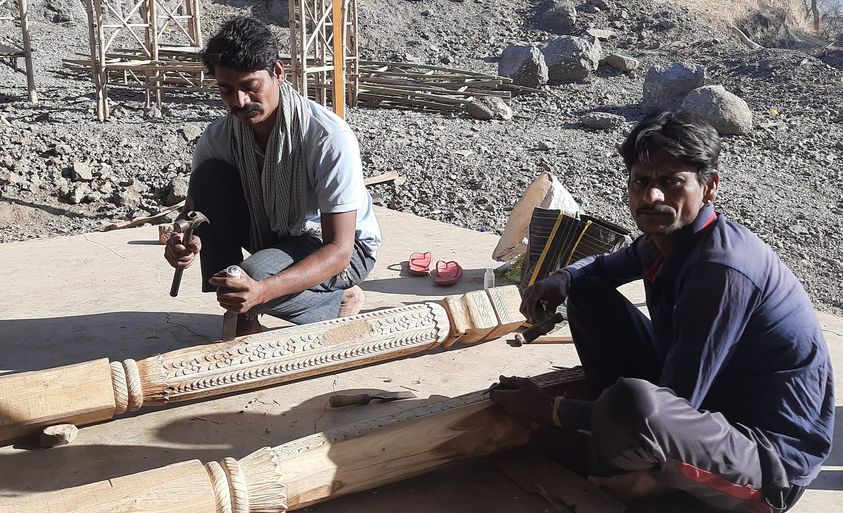
The experience of using the traditional myths and tunes in conveying modern developmental and cultural messages has shown that they are extremely effective for this purpose. Apart from this the history of Bheel adivasi rebellion against oppression right from the British times too is very inspiring and has been relied upon by the KMCS to enthuse the Bheel youth. So far this kind of innovation has been done in a haphazard manner by various social and political developmental organisations in the western Madhya Pradesh region. The KMCS motivated many other Adivasi mass organisations of the region to initiate the celebration of the anniversaries of adivasi martyrs and helped in publishing many works in Hindi on Adivasi history and culture and it has become clear that transcription of the whole of the folklore would also allow a systematic study of it and thus offer many more opportunities for innovation. The folklore is amenable to creative interpretation and copious material in support of the theory and practice of alternative, communitarian and sustainable development can be culled from it. The KMCS also initiated in the 1990s the process of recognition of the great Tantia Bheel, who was martyred by the British, as a freedom fighter which has now gained legitimacy and official recognition.
There is for example the creation myth sung in the villages near the River Narmada which details how God was suddenly beset with the idea to build the universe and he looked towards Relu Kabadi the woodsman to go into the jungle and fetch him wood. Thus starts the whole story of how slowly all the animals and plants are created and finally the rivers Narmada and Tapti. These rivers finally meet up with the ocean Dudu Hamad in marriage and in the process of their journey all the various villages, hills and valleys are created. The whole song gives a sense of the vastness of nature and the strength of natural processes and inculcates a respect in the listener for these. This is in direct contrast to the hubris of modern humans who have tried to subordinate nature to their own ends and given rise to the serious environmental problems that face them today. The Adivasis have been sufferers of this process. Thus, popularising their creation myth and emphasising that their worldview is much more “rational” in the present context of serious ecological degradation will considerably increase their self esteem.
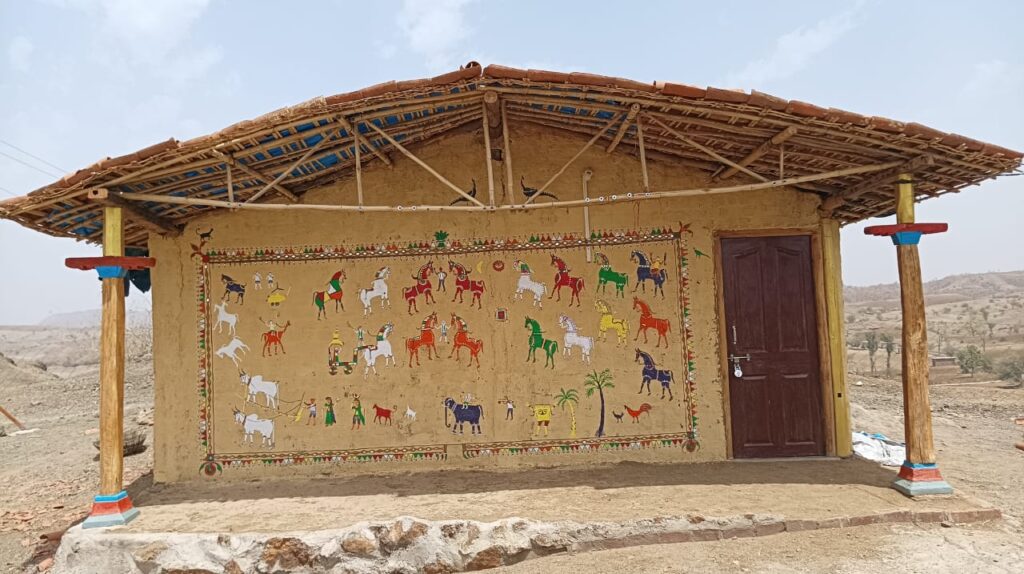
Similarly, there is another story in one of the epic songs about a woman who has to answer for having questioned the authority of her husband. She is brought before the panchayat which is the traditional all male dispute resolution forum. There the panches decree that she be punished for her disobedience and order that her tongue be cut off and given to the husband to swallow. The tongue then gets stuck in the throat of the husband where it has remained ever since. This story has been picked up to depict the extent to which the Bheel society is patriarchally oppressive of women. At the same time the fact that the tongue has got stuck in the husband’s throat offers the chance to the woman to recover it and so establish her right to speak out for her needs. This is the motif that has been used to organise the Bheel women to fight against diverse patriarchies inside the home and outside. Literature, especially religious literature of an allegorical character has tremendous power to motivate people to act to change their socio-economic condition. Unfortunately for Adivasis in the central Indian region in general and the Bheels in particular there has not been any significant effort to transcribe and use their rich oral literature except those of the KMCS.
Now the efforts of the KMCS have got a big boost as Professor Uttaran Dutta of the Hugh Downs School of Human Communication of the Arizona State University, USA, has associated with this effort. Incidentally, the ASU has been ranked the number one in the USA in terms of innovation for eight years in a row. Professor Dutta has helped in setting up a modern recording studio at the Rani Kajal Jeevan Shala, a residential school for Adivasi children run by KMCS in Kakrana village on the banks of the Narmada River in Alirajpur district, where lectures and musical performances are recorded and then uploaded onto the internet radio and youtube channels. The studio has been built in the traditional architectural style of the Bheel Adivais. Shankar Tadwal, secretary of the KMCS said, “The performances and the production are done by the Bheel Adivasis from across the four western Indian states of Rajasthan, Gujarat, Maharashtra and Madhya Pradesh and the studio also serves as a training facility for the young boys and girls of the school who are becoming proficient in media production”. The youtube channel has already garnered thousands of views since its inauguration on the 1st of July 2022 and this will increase over time as the cultural rejuvenation process gains in strength.
